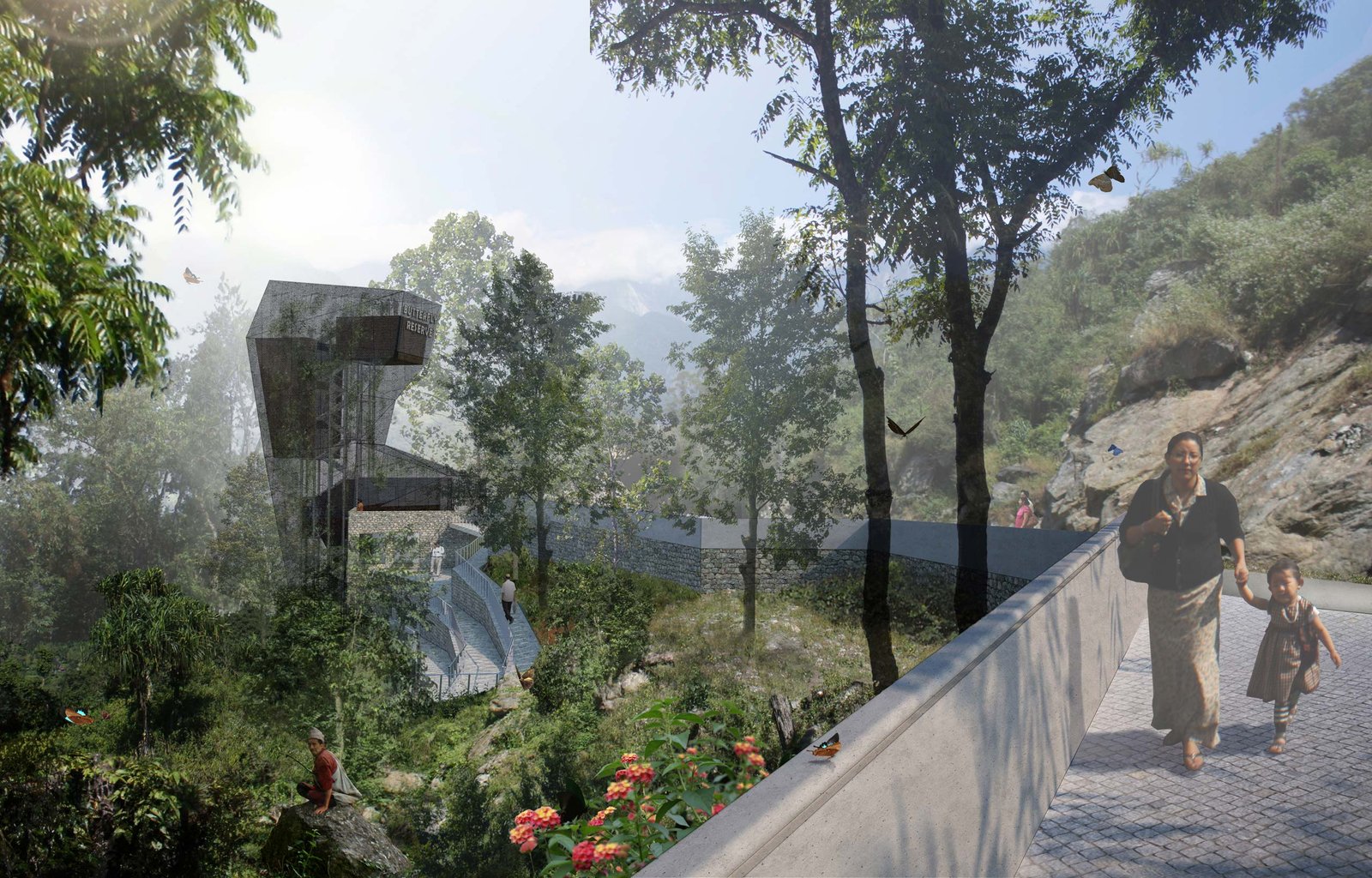- test : test
- test2 :
Humans are deeply interlinked with the life of butterflies. Not only are butterflies indicators of the health of our environment, in many cultures butterflies are associated with the soul. The relation to butterflies goes as far that in the Himalayan region, some of the Nagas of Manipur trace their ancestry from them. Architecture BRIO and fUSE have won the open competition held by the Forest Department of Sikkim to design the Himalayan Butterfly Reserve in Sikkim.
The proposed Butterfly Reserve is meant to be a celebration of this winged creature, found in abundance in the region. Owing to the high variation in vegetation and climate and its unique geographical location, Sikkim represents one of the butterfly hotspots in the world. Prevailing monsoon winds have pushed butterflies over the ages northwards into the mountain range and have isolated them. Currently 690 kinds of butterflies can be found in the region.

The Butterflies of Sikkim are under threat however. Their habitat is damaged by urbanization, infrastructural developments, invasion of exotic, non-native plants and climate change. The Butterfly Reserve’s main purpose is to stop this downward spiral and become an invigorator where butterflies can thrive and repopulate the region. However in order to generate a much wider base of conservation support amongst people the reserve provides the opportunity for visitors to understand the importance of the unique nature of Sikkim through these winged wonders.
On one hand the Reserve attempts to increase the diversity and quantity of butterflies in Sikkim, and on the other hand it intends instigate curiosity and awareness in people by bringing them close to their habitat.
This inherent conflict between behavior of humans and the habitat butterflies, forms the central theme of the design of the butterfly Reserve. It is known that, if there is too much human disturbance, butterflies can migrate away from that area and thereby defeating the objective of the reserve. Therefore any architectural intervention needs to be sensitive of its social and physical environmental impact.

The site designated for the Butterfly Reserve is 75 Acre. The area accessible for the public is 4 acres to minimize the impact of the visitors on the butterfly habitat. The most appropriate habitat for Butterflies is a lush landscape filled with nectar and feeding plants attract butterflies, which lay their eggs on the feeding plants. By increasing the richness and variety of these plants, the population and diversity of butterflies increases. Shady leafy areas are introduced where the butterflies can find refuge during their roosting times.
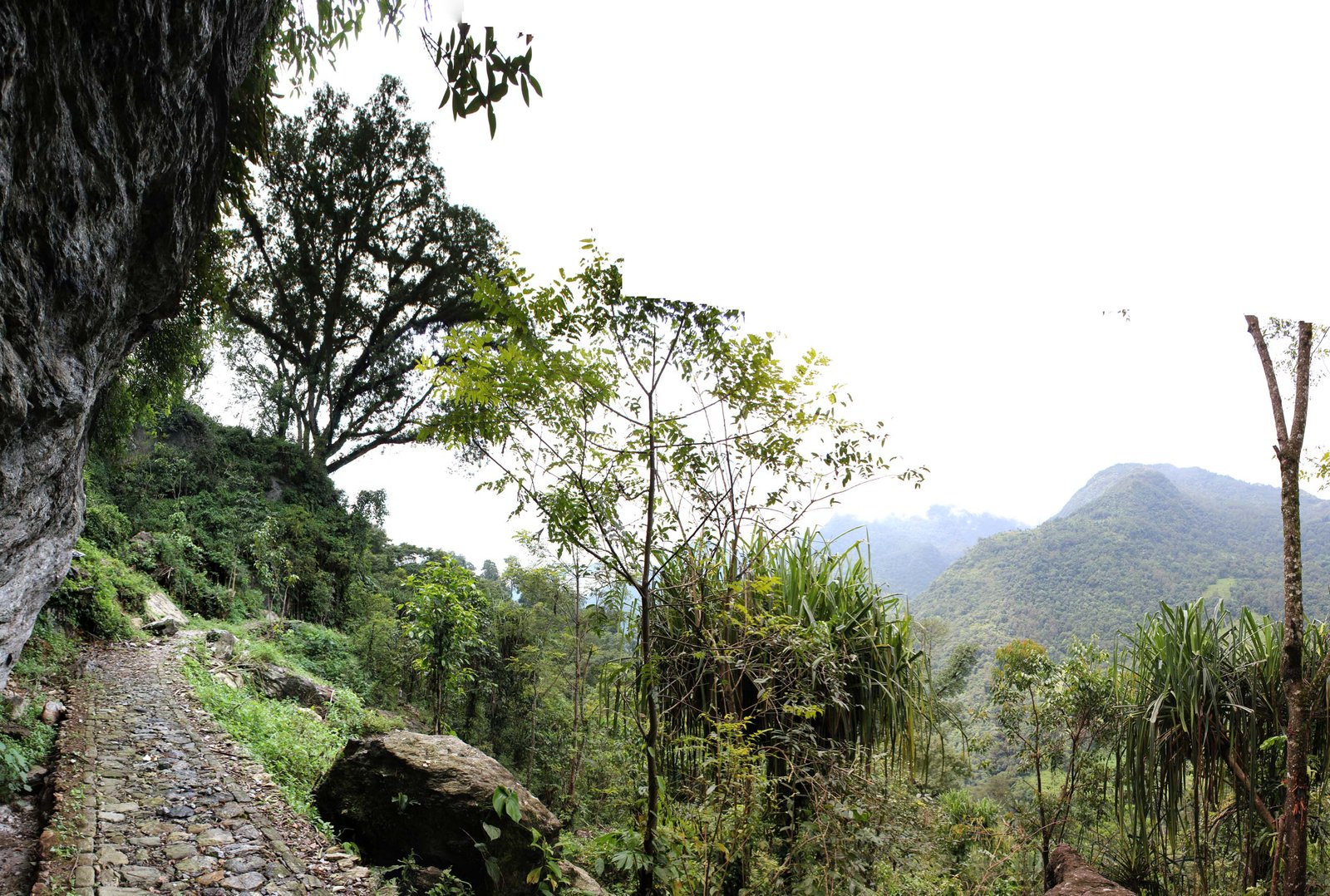
A muddy pond is created where butterflies are found to ‘mud puddle’ and take in vital minerals. Additional feeding areas with baskets of rotten fruits attract even more butterflies. In select areas netted enclosures protect the larvae and caterpillars from predators. These ‘butterfly enclosures’, where the butterflies are bred, are each flanked with modestly sized interpretation pavilions accessible to the public.
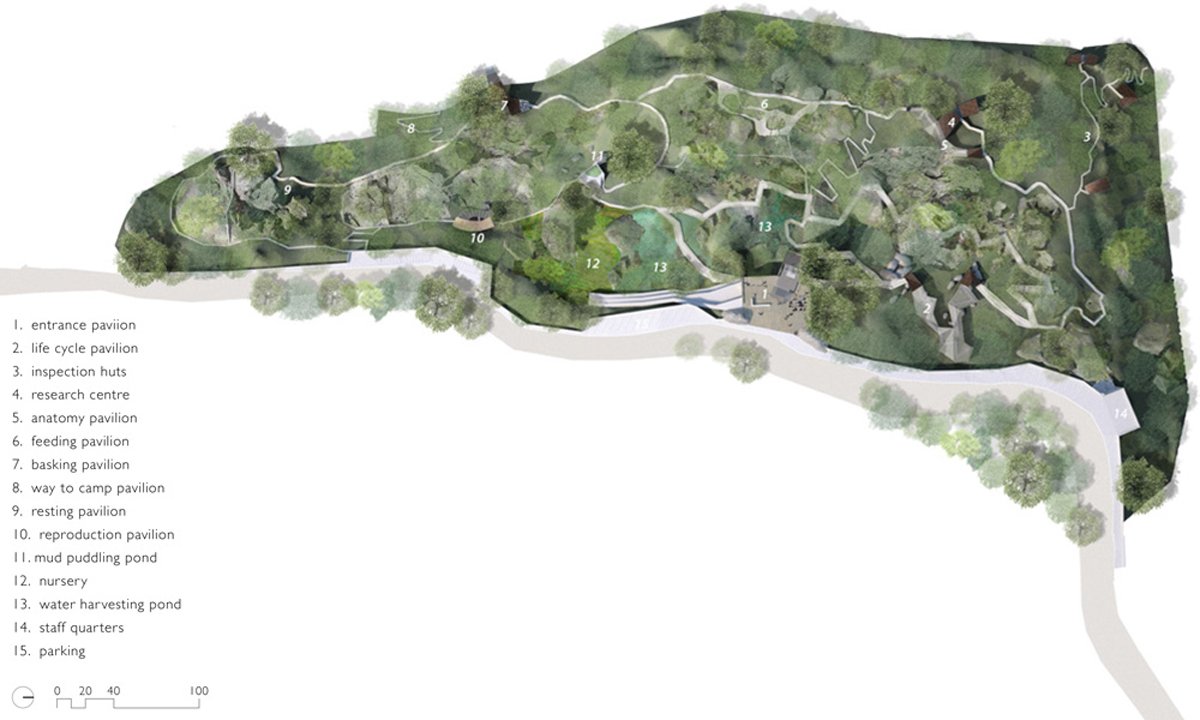
As the butterfly is not a sedentary animal, the best way of experiencing it in all its glory is to follow it through the landscape. Therefore the ‘butterfly enslosures’ are dispersed throughout the landscape and the visitor is drawn into the natural habitat of the butterfly.
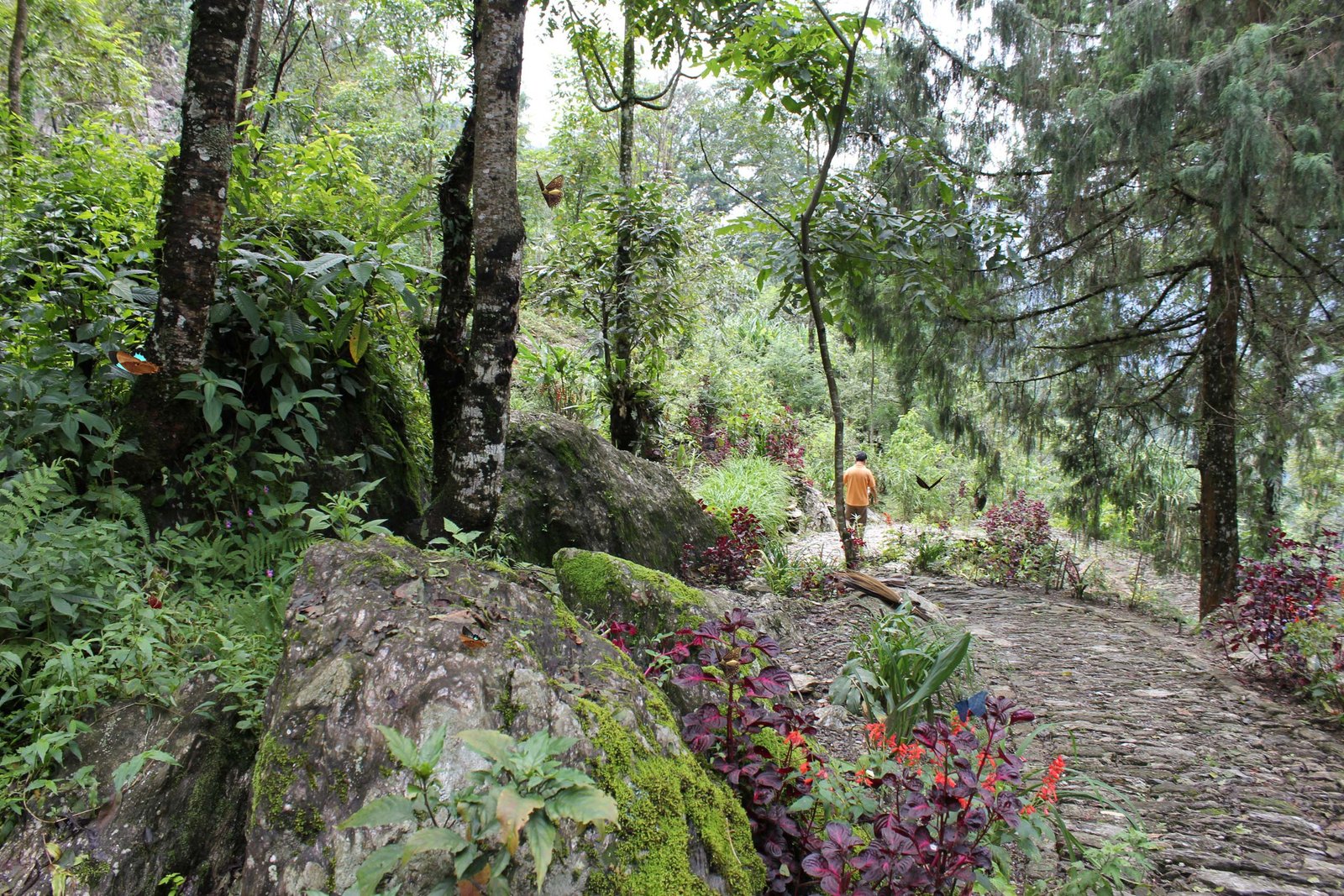
A series of pathways connecting the different landscapes, interpretation pavilions and enclosures, guide the visitor and provide information as to their butterfly experience. Each building, space, path or zone is used to describe specific characteristics or traits of the butterfly. Like the movement of the butterfly, the narration is along a flitting path, which twists and turns and explores the full beauty of the environment. The ancient Greeks compared the butterfly’s constant flitting from flower to flower to the constant movement of the mind: The Greek word for “butterfly” is psyche, which primarily means “soul” or “mind”.
The architectural scenography becomes a tool for narrating the metamorphosic story of the butterfly. The journey through the butterfly Reserve may start with ignorance of these little animals, but by the end, the visitor is to have a real engagement with the full life of the animal.
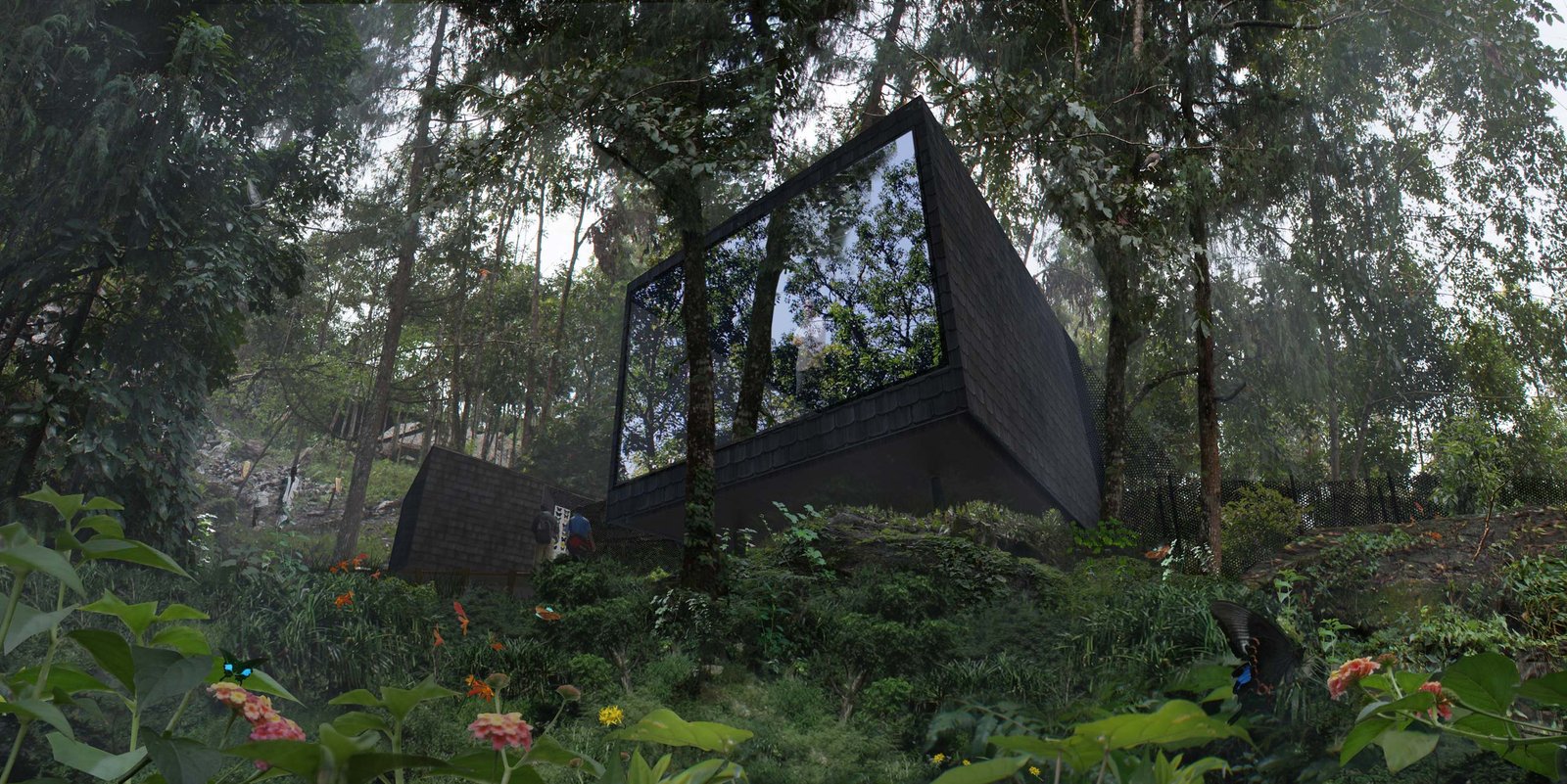
As a butterfly perches on tendril legs on a flower so the interventions should reduce the interference with the natural environment already existing on site. The interpretation pavilions are therefore lightweight timber frame structures on light steel columns. The nets are connected around the edges of the pavilions.
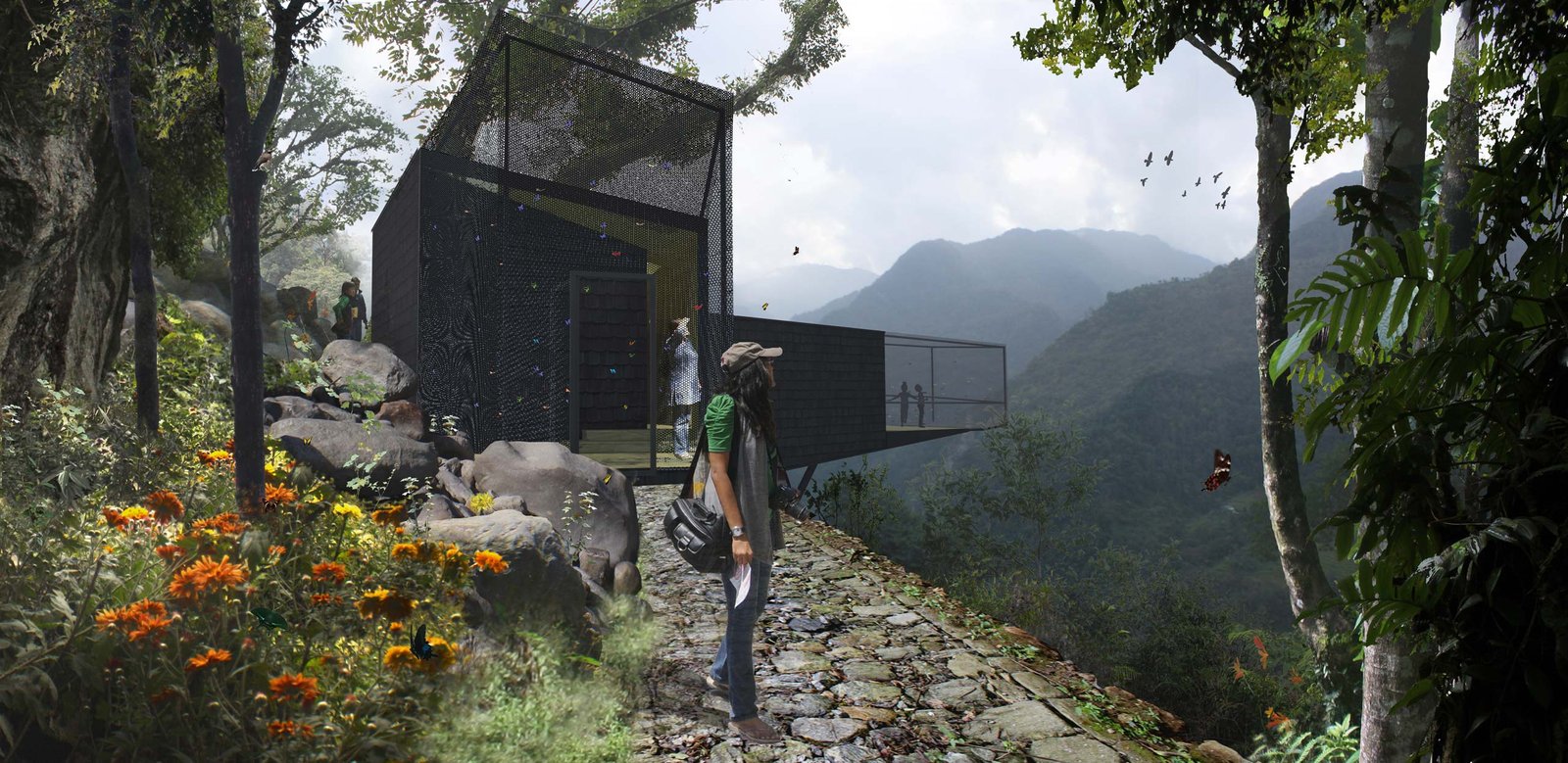
The “wattle and daub” timber frame structure are a common vernacular building method in Sikkim, and is suited to the climatic conditions of the region and built on centuries of knowledge.
However the architecture changes its appearance by cladding the frames with local timber roofing shingles, mounted in a way not unlike the scale on a butterfly’s wing.

The pavilions would be prefabricated to minimize construction disturbance at site. The steel supporting structure will be embedded in the rocky surface.
The netted areas are twisting and turning in between the existing dense vegetation and rocks. The nets will have to have just the right aperture to prevent butterflies escaping and allow sufficient percolation of sun light.
The Butterfly entrance structure is the culmination of the Butterfly Reserve as a constructed ecology: the watchtower comprises of a vertical butterfly garden interweaving through three cantilevered interpretation pavilions wrapped in a netted enclosure.
Its structure is based on tensegrity and balance; it is biomimicry in the form of camouflage and display. Here people are taught about how they can improve their environment for the sake of the butterflies. The vertical garden shows the possibilities of creating microenvironments beneficial for butterflies in urban areas. Visitors can learn how to create small butterfly ‘gardens’ or terraces in their own apartments or houses, before they take the journey back home.
The butterfly is a reminder to make changes when the opportunity arises. Change and transformation are inevitable for us all. The journey through the park encourages this in the hope for a better environment.
for more information on butterflies in India:
Krushnamegh Kunte
Sikkim Biodiversity Conservation and Forest Management Project
